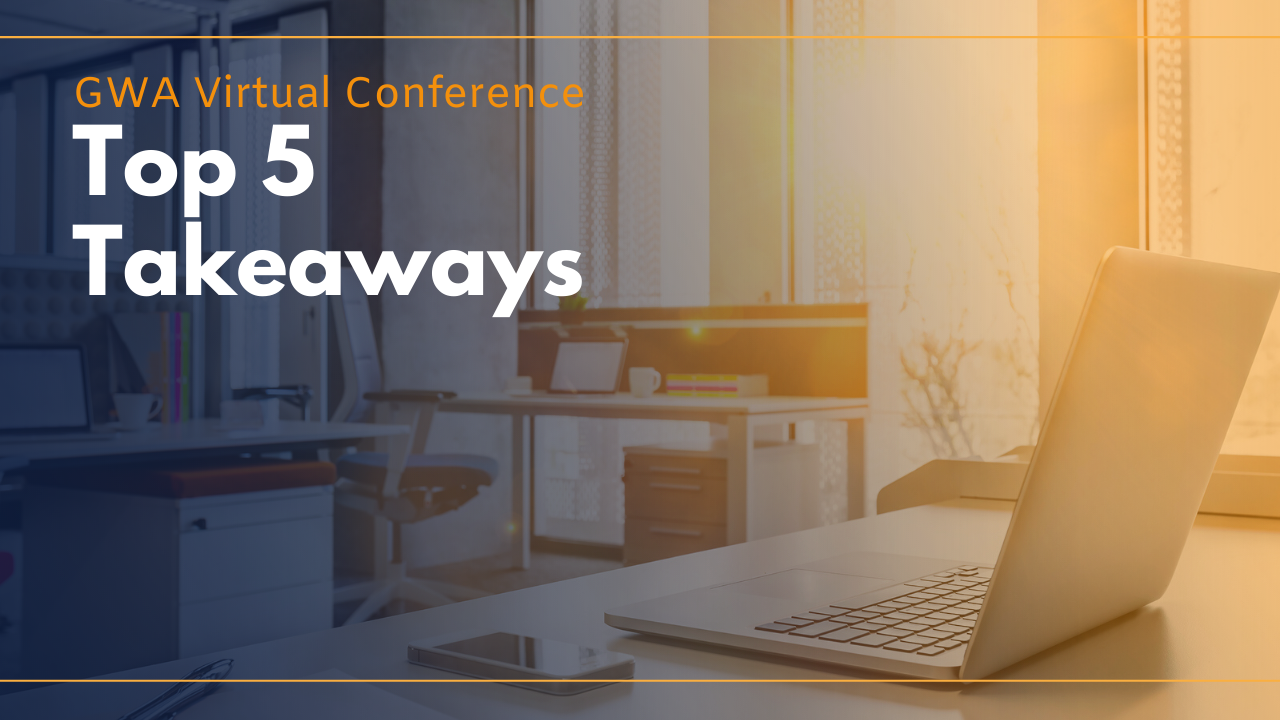- The GWA Virtual Conference ran for 24 hours and covered a huge array of flexible workspace topics.
- Over 1,500 attendees from across the world took part, to learn how to adapt to the changing business landscape.
- Allwork.Space’s 5 top takeaways feature the rise of suburban coworking, workspace design, and the shift in operating models.
The GWA Virtual Conference took place last Wednesday and Thursday, bringing together over 1,500 attendees from 69 countries.
The event focused on the future of flexible workspaces, how operators are responding to the COVID-19 pandemic, and what steps should be taken to safely welcome members back. The event ran for 24 hours straight in order to cater to the different time zones of attendees.
Below are some of our key takeaways from the virtual gathering.
1. The Office Is Not Dead
During his presentation, Joe Brady from the Instant Group confirmed what Allwork.Space recently stated: the office is not dead. More importantly, flexible workspaces are not dead and they will be needed now more than ever.
According to Brady, “your work as operators providing safe, flexible, agile, productive, and innovative workspace is needed now more than ever.”
Why? Because it has been proven that remote work works, and this has significant implications for commercial real estate.
Brady pointed out that some key questions corporate leaders will need to consider include:
- What will the future role of the office be?
- How well does our current portfolio meet the future operating model?
- What are the costs and barriers to change?
- What cost could be reduced by right-sizing our portfolio?
Even though organizations are preparing themselves to safely welcome people back into the office, not many of them will return to their pre-COVID-19 model of operation, where they expected workers in the office every day of the week.
In fact, many organizations have already stated they will allow employees to continue working in a remote, flexible fashion in the future. However, this doesn’t mean the office is dead, it merely suggests that the key role of the office will shift towards being a place of gathering and collaboration.
2. Operators Responded to the Pandemic in Different Ways
88% of flexible workspace operators reported that during the pandemic, they either closed their spaces or reduced their services. Interestingly enough, although 95% of people were allegedly working from home, some spaces still reported members coming in.
The good news is that no permanent closures were reported in the early stages — although this has since changed as The Riveter recently announced it will close all 9 of its locations due to the pandemic.
Those spaces that remained open during the pandemic responded in different ways.
- Increased focus on safety and security
- Implemented some sort of contactless interactions powered by technology
- Made changes to their design and layout (this is mostly true for coworking spaces)
- Enhanced their cleaning protocols.
3. The Industry Will Experience a Shift in Operating Models
A trend that was already gaining momentum and was accelerated by the pandemic is new operating models in the flexible workspace industry.
Many believe that moving forward, there will be more joint venture agreements and management agreements between corporates, landlords, and property developers with flexible workspace brands. Such models reduce the risk for both parties and are more likely to survive and perform well during times of crisis.
4. The Rise of Suburban Coworking
One of the main advantages workers have found of working from home is that they don’t have to commute. This, combined with the fact that many organizations will introduce flexible and remote work policies, means that people will likely search for office space that doesn’t require that they commute as much.
Another key reason that will discourage people from commuting for long periods of time is that the commuting experience will not be as seamless and easy as it was before COVID-19. People will have to wear masks, and those who commonly use public transportation will not feel as comfortable riding trains or buses. Plus going into a building where elevators are running at a reduced capacity will affect people’s perceptions of commuting.
Some organizations will likely subsidize the cost of that office space for members or enter into corporate coworking agreements, while others will require that workers pay from their own pocket.
5. Workplace Design Will Change
To become a safe space, the workplace will need to go through some changes. One of the most important is a de-densification process. Organizations will need to think about the optimal square footage per person, rethink how they use space, and implement strategies that enable physical distancing while in the office.
Additionally, many companies are likely to increasingly turn to technology to support new ways of working. In the workplace, they will likely use technology to power a touchless experience, but technology will also be used to enable remote work and collaboration. This means that digital transformation efforts will likely continue to be a top priority for businesses.


 Dr. Gleb Tsipursky – The Office Whisperer
Dr. Gleb Tsipursky – The Office Whisperer Nirit Cohen – WorkFutures
Nirit Cohen – WorkFutures Angela Howard – Culture Expert
Angela Howard – Culture Expert Drew Jones – Design & Innovation
Drew Jones – Design & Innovation Jonathan Price – CRE & Flex Expert
Jonathan Price – CRE & Flex Expert













